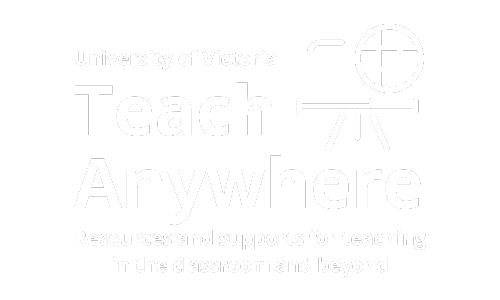Tips on assessment
In CEL, assignments are often more variable and open-ended than traditional classroom assessments. Assessments should allow students to demonstrate that they have achieved the learning outcomes for their specific CEL and provide opportunities for students to reflect on and demonstrate applications of newly-acquired knowledge and skills. Consider framing your assessment around assessment of learning objectives and assessment of reflection.
Challenges to traditional assessment strategies
As CEL often looks different from traditional lecture-based courses, there are a few challenges with using a traditional assessment strategy of exams and papers.
Challenges include:
- Varied, unpredictable nature of CEL
- Variety of experiences students might be engaging in
- Process is as important as a final product
Strategies for assessment of CEL
Considering the above challenges to traditional assessment, we suggest thinking about alternative approaches to assessing CEL.
Consider using:
- Common assessment elements across various experiences, such as: presentations, reports, case studies, data analysis, etc.
- include evidence of knowledge application, critical thinking, problem-solving, communication, collaboration and teamwork, initiative and leadership, and professionalism
- Co-created criteria for assessment (including co-created rubrics that the student may help shape to fit their specific project)
- Self-awareness tools and exercises
- One-on-one (student and instructor) assessments such as an exit interview
- Self-assessment and peer-assessment
- Feedback from community partner(s)
Assessing reflection activities
In addition, because reflection is an integral component of CEL, it is important to consider how reflection can make up part of the assessment strategy.
The subjective nature of assessing reflective activities and assignments can make assessment of CEL opportunities challenging. Bourner (2003) proposes examining the connections between assessment of critical thinking and critical reflection. He describes how critical thinking and reflection both have a two-stage structure that can be developed and assessed: bringing into conscious awareness and asking and responding to searching questions. For example, surface reflection, where students demonstrate that they can describe an experience, and deep reflection, where students engage with their experience in a questioning way and as a result learn more from their experience.
By assessing reflection, the importance of this crucial part of the learning process in EL is communicated. As Bourner (2003) points out, most students pay closer attention to what is assessed and “within the academy, assessment confers legitimacy” (p. 268).
Incorporate into reflection:
- The table below is an example of standards for critical reflection from Ash & Clayton (2009) that could be incorporated into an assessment
Standards for Assessing Critical Reflection
Integration
- Connection between experience and learning
Clarity
- Expands on ideas and uses examples
Accuracy
- Statements are factually correct
Precision
- Specific information included
Relevance
- Statements connect to main idea
Depth
- Explains reasons behind conclusions
Breadth
- Considers multiple perspectives
Logic
- Reasoning makes sense
Significance
- Attention to focus
Fairness
- Others’ perspectives are accurately prescribed
